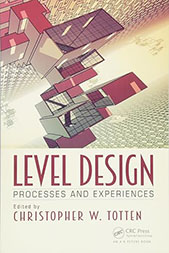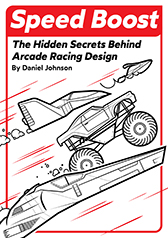Resident Evil: Umbrella Chronicles – For and Against the Critical Hit
March 23rd, 2010

One of the most contentious aspects of Resident Evil: Umbrella Chronicles is the targeting of critical, insta-kill shots. It’s understandable why this mechanic has received such harsh criticism, most of it’s founded, yet despite all the hoo-rah, there are solid reasons to defend the seemingly wonky. I wish to present both arguments as I see it. Again, video is a good point of reference, pity I can’t capture any myself.
Targeting System Introduction
Resident Evil: Umbrella Chronicles employs a two-tier critical hit system. On hitting any enemy’s weak point, a white flash is emitted (think photography flash), when your cursor is pointed over a zombie’s critical weak point the reticle will blink red and on landing a hit a blue flash is emitted and the zombie dies instantly. Insta-kill, “critical” hits only apply to zombies or crimson heads and not to any of the other enemy types. The weak point target is the head, the critical hit target is their brains, located at the tip of the head.
For
- Being a little more specific and targeting the brain adds a layer of depth to the weak spot concept
- Using the brain as the insta-kill, critical hit target makes logical sense
- The inclusion of a second weak point forces players to be more methodical and strategic (particularly when confronted with a zombie up close, which then becomes a method of stunning and gunning for the insta-kill).
- In turn, this system pushes players towards playing for accuracy and not to just spam enemies
- And this ties in well with the hidden files, moments of gameplay where spamming bullets at destructible objects is encouraged. Overall, the critical hit supports RE: Umbrella Chronicles in being tidily organised and segmented
Against
- To balance the 2 types of hits (3 if you count body shots), zombies takes roughly 3-5 head shots to down, this destroys the pacing
- Including two types of critical attacks is just confusing
- The system works against commonly accepted norms, being: head shots equal death, and that zombies go down with head shots
- Zombie’s heads therefore seem to be made of metal or something
Only Applicable for Zombies and Crimson Heads
(I didn’t want to preempt myself here, but it was necessary to include it in the above point as well). Zombies are the only enemy type whereby this targeting system is applicable, every other enemy in the game (snakes, dogs monkeys, lickers, hunters, all boss battles, etc) dies instantly by shooting their weak spot with the default gun (this is not so much the case with the other weapons).
For
- Zombies are a mainstay of the series, so it’s only appropriate that they’re given generous air time (through the long time it takes to aim precisely for critical hits, and the fact that zombies necessitate the critical hit variable)
- The confrontations with zombies are the most tactical of the entire game, they allow players to move between attacking and stunning (zombies in preparation for a critical hit) states
Against
- Presence of zombies become far too overbearing
- It’s also repetitive to be constantly met with the same enemy type
- Sequences with a mob of zombies act as pockets of slower gameplay (as the player tries for precision), this creates a wave of inconsistency throughout the experience
- Logically it doesn’t make much sense that the targeting rules in regards to zombies don’t apply to the other enemy types
Only Achievable with One Gun
I almost preempted this point too. This system, which I’ve just elaborated on, applies mainly, but not exclusively, to the default gun (the Samurai Edge). With zombies, insta-kill shots (the ones which add to your tally at the end-of-level grading) can only be triggered with the Samurai Edge. With other enemies though, a hit to the weak spot with the Samurai Edge is an insta-kill, but with other weapons, this isn’t always the case.
For
- Again we’re seeing a construction of rules which invite the player to be strategic, since only one gun can land a critical hit, it’s important that the player use the other weapons to aid in landing that critical shot, whether it be through stunning enemies or clearing non-zombie distractions
- Since the Samurai Edge has unlimited ammo, the targeting system doesn’t privilege those with a stockpile
- If any weapon could cause a critical hit, then obviously the rapid-firing weapons would reign supreme over the entire game, so it’s best to let the default weapon grant this power
Against
- Further unnecessary confusion, not only do critical hits only apply to zombies, but with use to a certain gun as well
- For players concious of critical hits, this design makes the selectable weapons cache partly redundant
Closing Statements
For
The dual layered critical hit system works to give Umbrella Chronicles more depth and strategy. Without the restrictions to enemy and weapon types, players would simply rely on a machine gun to spam-critical-hit their way through the title. Instead, Umbrella Chronicles disposes of norms to create a rich shooting system which encourages strategy and accuracy over random blasting.
Against
Resident Evil: Umbrella Chronicles‘ critical hit system is a non-unified one, and illogical at that. Zombies and the default gun are heavily favoured by way of establishing this system through the critical hit variable, and play therefore suffers from repetition. The other types of guns are also made redundant by this system. Furthermore, Umbrella Chronicles breaks the accepted norm that zombies die on head shots.
Resident Evil: Umbrella Chronicles – Inviting Replayability
March 21st, 2010

Rail shooters, being a coin-sucking genre from the arcade, have traditionally been cursed with limited playtime—it’s part of the reason why console ports of popular arcade rail shooters always get a bad wrap. Resident Evil: The Umbrella Chronicles (just going to omit the ‘the’ from here on out), as a shooter, brings little additions to the standard formula (bar some neat tweaks and flourishes), what it does do, however, is address this long-standing issue of replayability. For reference/a general overview of this title, please refer to the video review below:
There are two facts which ought to first be distinguished. Resident Evil: Umbrella Chronicles is a game which features a large amount of content (22 separate levels, each lasting roughly 15-20 minutes) and invites players to replay its large selection of levels. The former point speaks for itself itself (more content equal longer play time) and although it’s unprecedented for this type of game, it’s a point which isn’t of interest for this discussion. What’s of greater interest is the way in which Umbrella Chronicles maximises replayability by selling itself to different types of players. In a sense, Cavia (the developers) are attempting to solicit extended play time from players, and this is how they do it.
NB: Assigning a type of gamer to a respective heading just adds a nice touch. Of course, I’m talking in generalities, there is overlap.
Grading System
Player Type: The Perfectionist
On competition of each level your performance is graded on five different factors: clear time, number of enemies killed, number of critical hits, number of objects destroyed and the number of files obtained. Ranking systems such as this always prey on perfectionist tendencies, particularly in a twitch-based genre such as the rail shooter.

Sorry for the Japanese.
What I really like about the grading system is the individuality of each ranking variable. The tally, as a combination of factors, doesn’t entirely hinge on the player’s reflexes or shooting consistency (as with many games of this nature) and in turn opens itself up to being rather inclusive. The ‘files obtained’ variable is fixed on multiple play throughs (ie. once you’ve gathered a file at any stage, it will add to your ranking, you don’t need to find it again on subsequent play throughs) and along with the ‘objects destroyed’ variable (which is pretty easy to score well on) loosens the rigidness considerably. These variables act as bait, so that when a player does the rail shooter part well, and is graded respectively, their overall rank is pulled up, encouraging them to consider going for another round. You’re more likely to find new hidden files on repeated play throughs, so even if you don’t do so well, you’re rank is still likely to increase some, again, acting as motivation. So, in this regard, the grading system serves both perfectionists and normal players, inviting them to better their high score.
Hidden Files
Player Type: The Resident Evil Fan
Resident Evil: Umbrella Chronicles is basically one big fangasm, so it’s unsurprising then that one of these points would be dedicated to the fan children. The hidden files, strewn behind destructible objects in each level, provide insight into the characters behind the events of the four main chapters—a damn compelling reason for fans to replay completed levels. Sadly, most of the archives contain previous material ripped straight from the original games themselves (the journal entries and so forth), however, all bits of information pertaining to the final chapter, Umbrella’s End, are entirely new. So although the rewards are a little gimped, the most significant files are those which are the most difficult to obtain. In anycase, completing the archive (quite a momentous task), is quite the feat, one that should satisfy fans and completists alike.
Upgradable Weapons
Player Type: The Completist
Your ranking at the end of each level gives you stars which you can then spend to power up your weapons. I guess this serves the completist audience most, however, any type of player can benefit from improved weapons. Improved weapons assist with score board chasing and provide more ammo for random environment blasting in pursuit of hidden files. Since my 22hrs of play time didn’t reward me with enough stars to upgrade even half the weapons cache, I figure that only a completist would replay levels to max out all of the available weapons, making it the most likely candidate.
Alternative Paths
Player Type: The Tourist
Alternative paths are a genre staple and depending on how they’re handled can multiply play time significantly, ideal for tourist players who prefer to see all the locations on offer. The traditional method of divergent paths is to simply present two options, encouraging the player to replay in order to experience the path which went previously unselected. Other games are much more elaborate, House of the Dead II, for instance, is famous for its organic path system where the player’s route through each level is skill-dependent, allowing for a myriad of pathways which open and close depending of whether the player meets certain conditions. Umbrella Chronicles plays is pretty safe, going down the traditional route. In the final chapter though, there are sequences in a maze-like laboratory where many options are presented. Fortunately each route is quite substantial and makes at least a repeated play worthwhile.
Co-Op Play
Player Type: Multi-player
Explains itself really, cooperative multiplayer invites players to approach the content with two angles: with a friend or by oneself.
Conclusion
Cavia succeed on two fronts, the first of which is to offer a generous amount of content, the second is to farm that content for as much as its worth. The second option is the more intelligent one, in regards to development efforts, it takes much less effort for developers to convince the player to replay stages than it is to create all new ones. Resident Evil: Umbrella Chronicles is therefore quite intelligently designed to address this issue which has plagued the genre for many years, in turn establishing a new identity for the console rail shooter.
Link Out (19/3/10)
March 19th, 2010

There’s been a few articles circling around in regards to the hopelessness of earning money in the enthusiast press. It’s a pretty sad state of affairs. Information yearns to be free, painting a rather bleak outlook for those professionals. Although the topic has very little to do with me personally, it has made me consider why I put such an effort into a production which offers no monetary rewards.
What I realised after thinking through this question was that money is entirely irrelevant. I’ve become addicted to writing about games, because it’s a form of education. An education that if left absent I’d never feel satisfied with putting a completed game on the shelf. Understanding, or at least an attempt at understanding, has become a pivotal point of my game playing process, and considering that I don’t wish to give up my favourite hobby anytime soon, I feel that the writing will therefore continue.
I guess this is what they call “writing for the passion”. I don’t think of it as a passion though, I write for purely selfish reasons and the fact that you might consider reading this is uhh…cool, so thanks for that! Talking about people who write for the love of it and those who write to survive, I have a killer collection of links to share with you this time. And hey, if they have ads on their website, toss ’em a bone and click through, I’m sure that it’ll help.
The Death of JRPGs – But Not Really
Kurt makes a strong argument against a contentious Gamasutra post which discussed the now clichéd topic of the death of the JRPG. Kurt lays it straight which is bloody good to hear, considering the number of haters fueling the largely unfounded cynicism. Specifically, his point on the current state of transition in the genre (I would love to read some game-specific case studies explicating on examples of the transition) and the decline of anime in western countries are very interesting and well substantiated.
The first time I landed upon Racketboy’s blog I was awestruck at the material on display, loved it. However, this kinda died out in my mind as the articles became a little too formulaic. The 8 or so podcasts that have recently been produced have rekindled my enthusiasm for the website. I’m just so floored by not just the selection of guests, but their appropriacy and the thoughtfulness of the entire production. Some great grassroots retro coverage right here.
An Excitebike World Rally Developer Q&A – Retronauts
There’s been hardly any coverage on the new Excitebike: World Rally title for WiiWare which is quite sad. Thankfully, Jeremy Parish showed the initiative and interviewed some of the key members behind the production. Typically of Parish, there’s some thoughtful questions thrown in and the interview as a whole does a good job at introducing the title. Well worth a read.
The Peak of the ‘Mario’ Franchise – Popmatters
In this post, L.B. Jeffries discusses why Super Mario World is his favourite Mario platformer, referring to the game’s experimental nature, flexibility and devious exploration elements which individualise it from other Mario platformers. Quite a good read.
Bonus Round Episode 402 – The State of the Industry
Jason Rubin freaking gets it. I’ve always enjoyed what Jason has had to say about the games industry and was very pleased to see him back on Bonus Round. This time though there was a bit of confusion regarding his comments made in the second part of the show and he later elaborated on his thoughts via Geoff Keighly’s blog based on angry responses from commenters. I don’t think that Jason needed to supplement what he said on the show with an explanation, it’s quite clear that his comments were washed around with the generalities which the show sometimes takes as given fact (eg. hardcore/casual gaming dichotomy, Wii 3rd party games not selling). It’s not all bad though, as Jason has started his own blog which is awesome, check it out.
Iwata Asks – Zelda Handheld History
The Iwata Asks interviews is like being given a golden ticket into Willy Wonka’s chocolate factory. I’m really digging this stuff! You can find a directory of articles here and the initial Wii interviews here. The interviews have a Japanese feel in that there is an undercurrent emphasis on relationship-natured subjects and the unity of the group. The translation of the interviews are fantastic, accompanied by video and picture footnotes. I encourage that you read them all. The Zelda handheld interviews, which I’ve linked to, are quite interesting. I’m very happy that Iwata addressed the individualism of Zelda: Link’s Awakening and the relationship with Flagship and Capcom with the later titles. Above all else though are included images of design docs for the original Zelda and Super Mario Bros. I guess I’ll leave it at that!
Third Party Puzzle – Eurogamer
I’m just going to quote what I said about this article from Twitter:
Basically good games with strong marketing sell, Nintendo’s presence seems to be an excuse to pass blame for under performing in these areas. Even Nintendo have weak sellers like Battalion Wars 2, Walk with Me, Excitebots, Chibi Robo and Custom Robo – same reasons.
The Carrot On A Stick Approach To Game Design – Siliconera
I’ve been quite fortunate in being able to discuss Zelda and Okami with Ishaan from Siliconera. Ishaan is very astute and has a great knowledge about games. I’m pleased then that our discussion evolved into a post which he wrote for Siliconera. There are a few points that he didn’t mention which I might churn out into an article myself.



 Game Design Companion: A Critical Analysis of Wario Land 4 - $7.99
Game Design Companion: A Critical Analysis of Wario Land 4 - $7.99 Level Design: Processes and Experiences
Level Design: Processes and Experiences Speed Boost: The Hidden Secrets Behind Arcade Racing Design - $5.99
Speed Boost: The Hidden Secrets Behind Arcade Racing Design - $5.99 Adventures in Games Analysis: Volume I - $5.99
Adventures in Games Analysis: Volume I - $5.99







